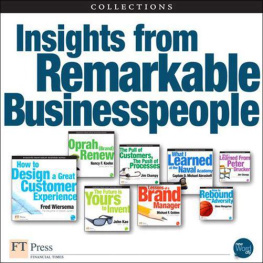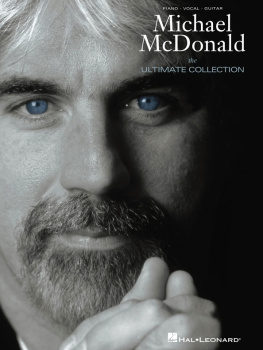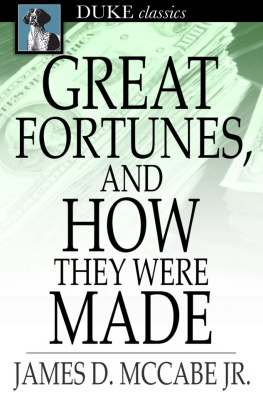D. Michael Abrashoff - Insights from Remarkable Businesspeople (Collection)
Here you can read online D. Michael Abrashoff - Insights from Remarkable Businesspeople (Collection) full text of the book (entire story) in english for free. Download pdf and epub, get meaning, cover and reviews about this ebook. year: 2010, publisher: FT Press, genre: Home and family. Description of the work, (preface) as well as reviews are available. Best literature library LitArk.com created for fans of good reading and offers a wide selection of genres:
Romance novel
Science fiction
Adventure
Detective
Science
History
Home and family
Prose
Art
Politics
Computer
Non-fiction
Religion
Business
Children
Humor
Choose a favorite category and find really read worthwhile books. Enjoy immersion in the world of imagination, feel the emotions of the characters or learn something new for yourself, make an fascinating discovery.
- Book:Insights from Remarkable Businesspeople (Collection)
- Author:
- Publisher:FT Press
- Genre:
- Year:2010
- Rating:4 / 5
- Favourites:Add to favourites
- Your mark:
- 80
- 1
- 2
- 3
- 4
- 5
Insights from Remarkable Businesspeople (Collection): summary, description and annotation
We offer to read an annotation, description, summary or preface (depends on what the author of the book "Insights from Remarkable Businesspeople (Collection)" wrote himself). If you haven't found the necessary information about the book — write in the comments, we will try to find it.
Insights from Remarkable Businesspeople (Collection) — read online for free the complete book (whole text) full work
Below is the text of the book, divided by pages. System saving the place of the last page read, allows you to conveniently read the book "Insights from Remarkable Businesspeople (Collection)" online for free, without having to search again every time where you left off. Put a bookmark, and you can go to the page where you finished reading at any time.
Font size:
Interval:
Bookmark:

FT Press Delivers

Captain D. Michael Abrashoff
THE GREATER DIFFICULTY, THE MORE GLORY IN SURMOUNTING IT. SKILLFUL PILOTS GAIN THEIR REPUTATION FROM STORMS AND TEMPESTS.
Epicures
I wish nothing less for you than a life of smooth sailing: May your people be none but the best, your enterprises all blue chips, and your profits always on the rise. In reality, though, the odds are that one day you will have to try to change the course of a troubled organization. Ive been there, and here I tell you how to go about it.
You could say the Atlanta Falcons hit rock bottom the day a tornado ripped off half the roof of the teams football stadium. By then, the Falcons had nothing left to lose. Their charismatic quarterback, Michael Vick, was serving 23 months in prison for leading a dogfighting ring. Their coach, Bobby Petrino, had defected in mid-season to college football. They had won only four games in the 2007 season, losing 12. They werent just defeated; they were demoralized, beaten, losers.
It was up to their owner, Arthur Blank, best known as the co-founder of Home Depot, to turn this sorry situation around. And in one of the deftest, most efficient performances Ive ever heard of, he did just that. By the end of the 2008 season, the Falcons had gone to the playoffs with an 11 and 5 record. Their new coach, Mike Smith, was voted the National Football League Coach of the Year and their quarterback, Matt Ryan, was the NFL AP Offensive Rookie of the Year. This really is the season of miracles, Blank said when the Falcons made the playoffs. But the miracles all traced to the careful moves he made to turn around his losing team.
How do you fix a dysfunctional organization? There are four major steps. Lets take each in turn.
In any turnaround, the first necessity is to identify the problem. In my own case, this was easy: On the day I took command of USS Benfold, I watched, appalled, while the 310 men and women of the crew jeered raucously as my predecessor left the ship. It was suddenly clear to me that most of the problems on Benfoldlow morale, terrible combat readiness ratings, low promotion rates, lack of accountabilitystarted at the top. It was equally obvious that what started at the top must be fixed from the top.
Arthur Blank also understood this. But his diagnosis of the Falcons basic problem was shrewd and realistic. Just like USS Benfold, they didnt lack talent, he decided, but the playersand the fansfelt betrayed and deserted. Their coach, the mainspring of any team, had abandoned them. Their trusted and hugely gifted quarterback had been caught in a squalid crime. What they needed, Blank decided, was a year of stability with a coach they could trust, a man with unquestionable integrity. He found that in Mike Smith, who had never been head coach but had logged nearly 10 years in the NFL and another 16 in college football. From the beginning, the players were reassuredand as the season of miracles unfolded, so were the fans.
Paul Azinger faced almost as tough a taskbut made a different diagnosiswhen he agreed to be captain of Americas Ryder Cup golf team for the 2008 international competition. Not only had the United States lost five of the six previous matches against Europe, but worse, superstar Tiger Woods was injured and unavailable, and much of the team would be made up of rookies.
Azinger realized that the real problem was something else entirely: Professional tour golfers play for themselves; working together for the common good is not in their lexicon. What was needed, he decided, was a team-building strategy. He provided one, and the results, as youll see, were astonishing.
Mark Hurds problemand his diagnosis of itwas very different. Hurd took over Hewlett-Packard, the giant electronics maker, in 2005 as the successor to Carly Fiorina. A flamboyant, charismatic CEO, she had appeared on a dozen magazine covers and made a name for herself but hadnt done much for HPs shareholders. Her decision to buy Compaq in 2002 touched off three years of fumbling efforts to meld two incompatible corporate cultures. After firing her, HPs directors turned to Hurd, CEO of NCR, a producer of prosaic cash registers and ATMs. Most analysts expected that he would drastically downsize Fiorinas strategy and spin off large parts of Compaq.
He didnt. In fact, Hurd didnt even rearrange the furniture when he moved into Fiorinas office. There was nothing wrong with her strategy, he decided early on. The real problem was execution. With a mantra of Do it simple and have accountability and responsibility, he burrowed into every division of the huge company to make it more efficient and more profitable.
Once youve diagnosed the problem, the second essential in setting a new course for a dysfunctional organization is to get people on your side in the drive to make things better. I spent my first weeks on Benfold walking the ship, quietly watching and listening. Sailors grumbled loudly while I was in earshot. Many wouldnt meet my eye, saluting perfunctorily and sidling past me when we met on deck. I learned later that the situation was even worse than I knew: Many crewmen were systematically shirking their duties by hiding on watch. Sarah Garner, a radar control technician who came aboard about the same time I did, told me later that she opened a door one day only to be told, Thats Petes hiding place. You cant go in there.
I kept walking the ship and talking to the sailors. I reinforced good performance constantly in the ships newsletter, over the public address system, and on posters and bulletin boards. I wrote letters to a sailors spouse or parents hailing every major achievement. I handed out medals. I encouraged sailors to learn and study and set up training programs to help them acquire new skills. And, in the end, that sullen, disgruntled bunch of swabbies turned into a real crew, alert and lively, proud of their work and their ship. They bought into the cause to make Benfold the best damn ship in the U.S. Navy. And it was my sailors who won us the Spokane Trophy, officially naming Benfold as the best ship in the Pacific fleet.
On his Ryder Cup team, Paul Azinger began with a luxury I didnt have. Unlike a Navy captain, Azinger could hand-pick four members of his 12-man squad. For the rest, he changed the qualifying rules: To find golfers on a winning streak, he shortened the period in which players won most of their points for Ryder Cup eligibility by winning or placing high in tournaments. He cut the qualifying period from two years to one, and extended the deadline to just two weeks before the Ryder matches began.
The core of Azingers strategy was an idea he picked up from a documentary on the Pentagons Special Forces, which use teams about the size of a Ryder Cup squad but often break them into subgroups. Azinger divided his squad into three pods of four men each, who played all their practice rounds together and were paired only with fellow pod members in Ryder matches. The pods bonded into mini-teams; as assistant captain Olin Browne told The Wall Street Journal, they allowed the players, without any formal training, to feed off each other and to help each other and to manage all the different things that come up in a pressure-cooker situation like the Ryder Cup.
Next pageFont size:
Interval:
Bookmark:
Similar books «Insights from Remarkable Businesspeople (Collection)»
Look at similar books to Insights from Remarkable Businesspeople (Collection). We have selected literature similar in name and meaning in the hope of providing readers with more options to find new, interesting, not yet read works.
Discussion, reviews of the book Insights from Remarkable Businesspeople (Collection) and just readers' own opinions. Leave your comments, write what you think about the work, its meaning or the main characters. Specify what exactly you liked and what you didn't like, and why you think so.











